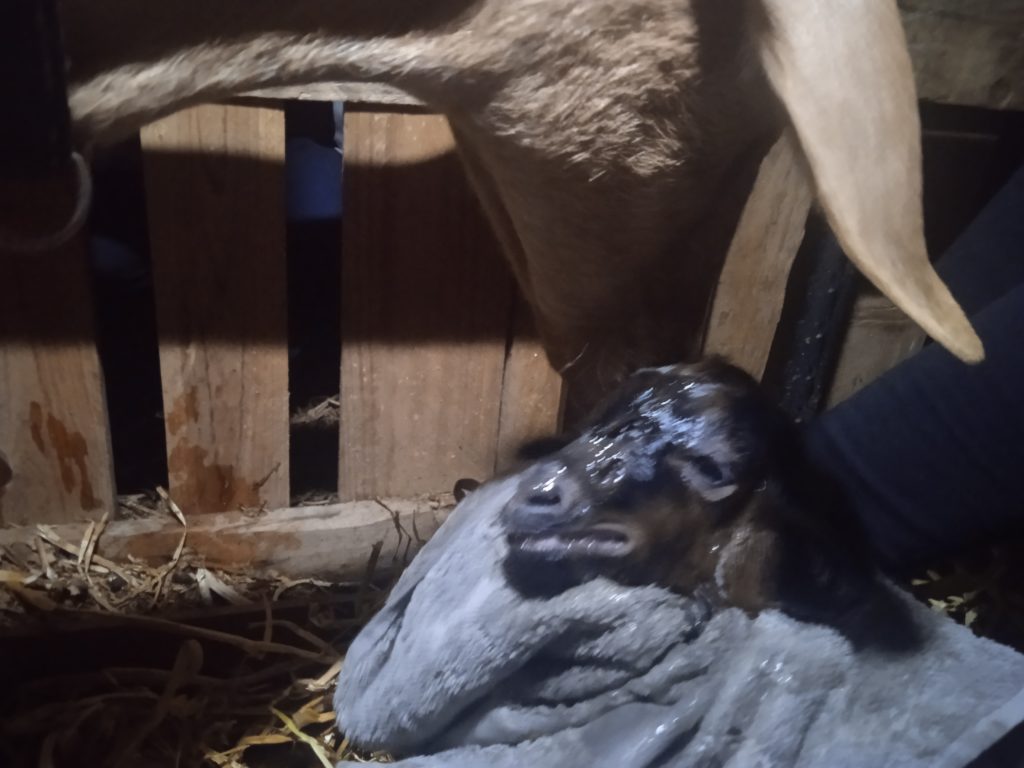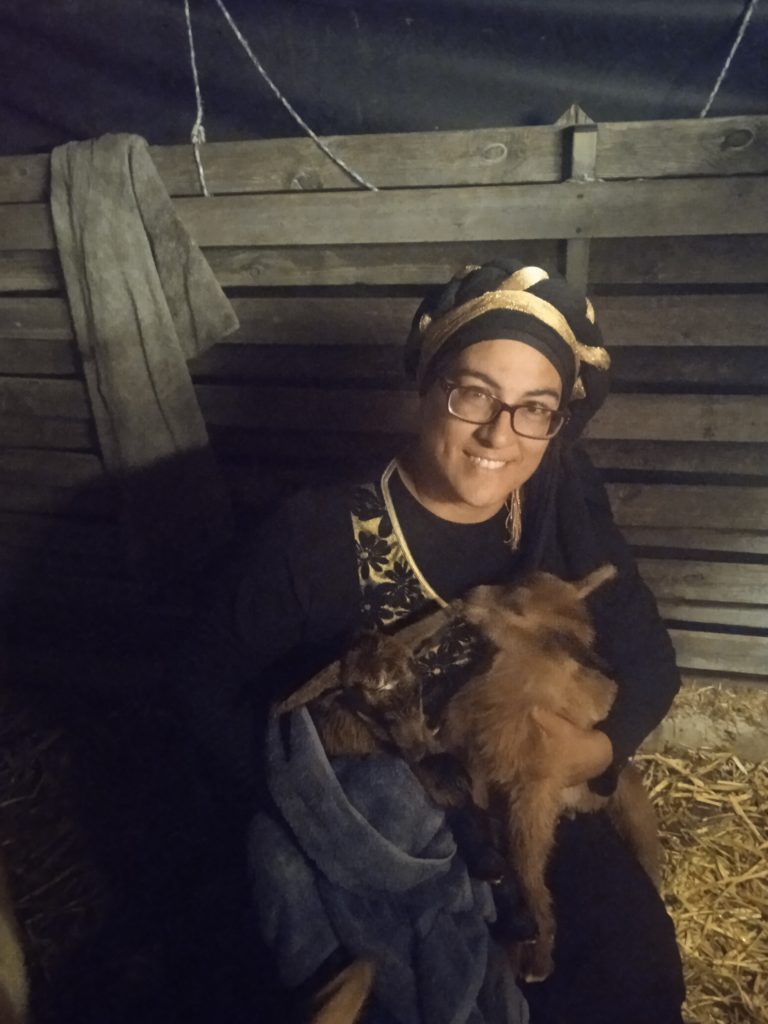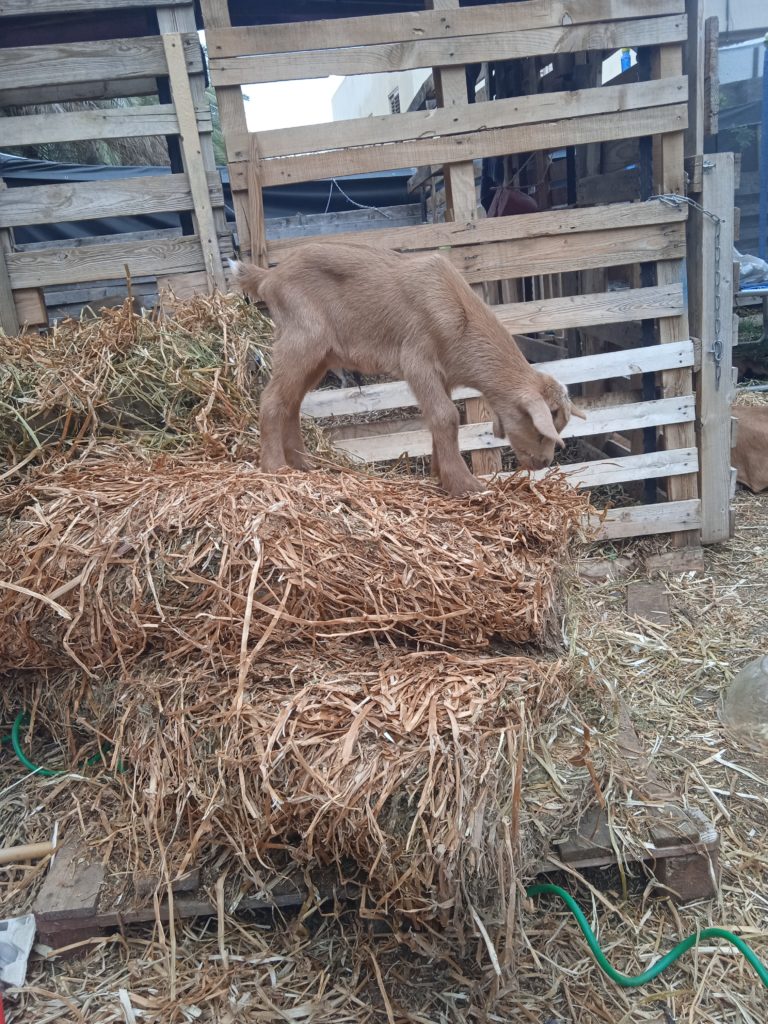It’s been a busy few weeks with Pesach preparations, tons of guests, and finally things are getting back to normal.
This week has been kidding season. It kicked off on Saturday night with our first time mother delivering twins – we got there in time to see the first had just been delivered, and were able to watch the second being born.

The babies were dried off (both males), we got them nursing, and we all went to bed grateful things went so smoothly.

The next day the babies weren’t nursing and the placenta was still not fully detached. As the hours went by, it got more and more stressful worrying about this. I reached out to vets for help, but those we reached didn’t deal with goats. We couldn’t reach anyone knowledgeable about the specific issue we had until the late afternoon, nor could I find anyone who could give me contact information for a vet who deals with goats.
A friend with goats suggested we bottlefeed the colostrum to be sure to get it into the babies, so my son ran out to buy bottles and then milked the doe to feed to her kids. They didn’t get the hang of sucking on the bottle so we had to hold their mouths open and drip the colostrum in. That may sound cute but it really wasn’t fun. Baby goats will die if they don’t get enough colostrum soon enough, and we were both worried that the babies weren’t getting what they needed.
Someone came to show me how to help get the placenta out by pulling up on the goat’s midsection, and a bit more of the placenta came out when she was here. But it was still not coming out. While she was here, two more people came by, one of who knew someone very experienced with goats. She called him and asked him to come by and help us.
I was so grateful when a couple of hours later he arrived. Finally someone with the knowledge and experience to deal with the placenta issue – a fully or partially retained placenta is also something that a goat will die from if not resolved soon enough. By this point it had been nineteen hours since she gave birth and the placenta hanging out was beginning to smell. He was able to remove it, and showed my husband how to give her an antibiotic shot.
He checked the babies and said they looked very healthy and strong, and their tummies were full and that’s why they weren’t nursing more. That was such a relief.
Happily, the kids started nursing regularly soon after that. With the mother doe recovering beautifully from the birth, we had a couple of days to relax and enjoy the kids before the next goat kidded. She delivered when no one was home without any complications, and my son came home to find a healthy singleton all dried off. A big and healthy purebred male.
Two and a half more days went by, and yesterday afternoon my son came inside to let us know the amniotic sac had partially emerged from doe number 3. We all ran out, anticipating seeing the birth within a few minutes. We waited, and waited, and waited. The face and front hooves were visible but then retreated back into the mother.
Even though everyone was very quiet, I thought perhaps our presence was hindering the birth so we all went inside to leave her alone, also taking the other goats and their kids outside the pen to give her space. More time went by, and I wanted to look up how long it should take a goat to give birth once the amniotic sac emerged, since I was concerned it was taking too long (over two hours had passed since we first saw the amniotic sac beginning to show). I also was worried because when she was laying on the ground, another goat tread on the amniotic sac and popped it – would the kid be born dead by the time he was out?
What I read led me to think we had a difficult presentation on our hands, and that was the reason for the extended laboring time. Usually they say goats give birth on their own and you’re not needed, but this wasn’t one of those times. My son called a friend with goats for advice; he was told we would probably have to help pull the kid out. Ds13 and ds15 went out to the pen, and at the first contraction, ds15 began pulling the kid out by his front hooves. Once the head and both front hooves were out, the body should have slid right out, but it didn’t.
Ds13 took the hooves on the right side of the kid, and ds15 held the hooves on the left side of the kid, and with each contraction, they pulled together.
We soon saw the reason for the delayed birth – the head of the second kid was right under the stomach of his twin, instead of being behind him. (Probably the back hooves of the first kid were keeping the head of the second one held in place.)
I told ds15 to push the head back in to allow the first kid to be born, but the force of the contractions was too strong and he couldn’t. Instead, the two boys pulled together as much as they could to get the first kid out from. They later told me they were pulling very hard because it was so difficult. It was a relief to see him breathing and his mother began licking him off right away. The head of the second one came out together with the birth of the second half of the first kid, and within a few minutes the second kid was born (also with assistance). (Male/female twins – there’s only one female out of five kids born.)
Whew. Ds13 got them started nursing, and we’ll keep an eye on them today to make sure they’re nursing on their own.

Goats can’t stand up immediately after being born, and it’s fun to watch them develop the ability to walk. They are wobbly and tumble quite a bit. Of the first two kids born, one is more playful and the other is shy – watching the inquisitive kid is so entertaining! Yesterday we were all very entertained and laughing watching him bound up the tarp covered hay, then sliding down – and then doing it again and again when he realized how fun it was.

Are you wondering what we’re going to do with eight goats? We’re not going to keep them all! The males will all be sold as soon as they can be weaned. We have yet to determine if we’ll keep all the does and the doeling, or just two of them. In a month we’ll assess the milk production and make a decision. The only doe who isn’t in question is Buttercup, the goat who gave birth yesterday.
We’re relieved to have successfully navigated our first kidding season. Now it’s time to enjoy the antics and playfulness of our baby kids!
Avivah
Leave a Reply